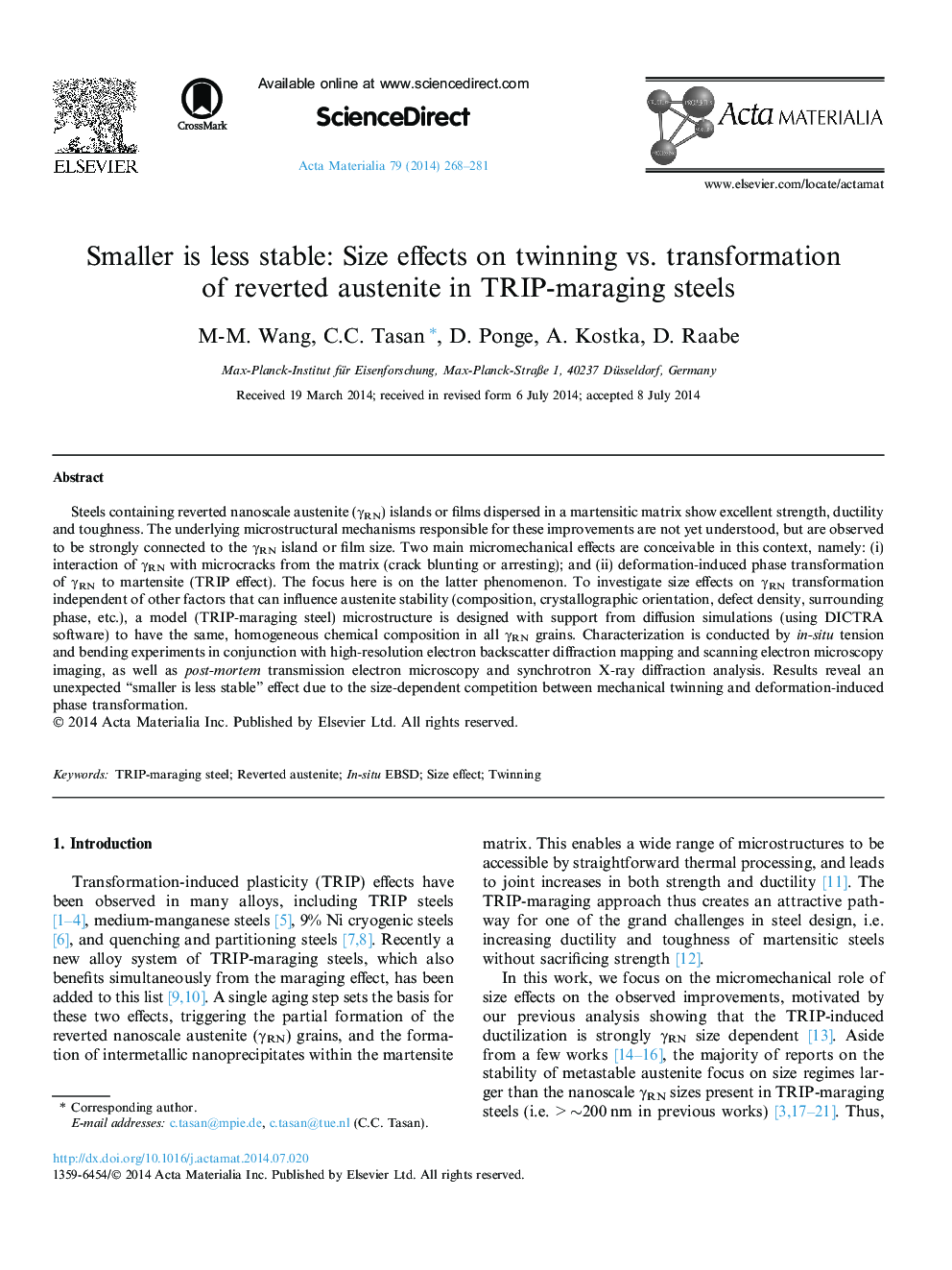| Article ID | Journal | Published Year | Pages | File Type |
|---|---|---|---|---|
| 7881168 | Acta Materialia | 2014 | 14 Pages |
Abstract
Steels containing reverted nanoscale austenite (γRN) islands or films dispersed in a martensitic matrix show excellent strength, ductility and toughness. The underlying microstructural mechanisms responsible for these improvements are not yet understood, but are observed to be strongly connected to the γRN island or film size. Two main micromechanical effects are conceivable in this context, namely: (i) interaction of γRN with microcracks from the matrix (crack blunting or arresting); and (ii) deformation-induced phase transformation of γRN to martensite (TRIP effect). The focus here is on the latter phenomenon. To investigate size effects on γRN transformation independent of other factors that can influence austenite stability (composition, crystallographic orientation, defect density, surrounding phase, etc.), a model (TRIP-maraging steel) microstructure is designed with support from diffusion simulations (using DICTRA software) to have the same, homogeneous chemical composition in all γRN grains. Characterization is conducted by in-situ tension and bending experiments in conjunction with high-resolution electron backscatter diffraction mapping and scanning electron microscopy imaging, as well as post-mortem transmission electron microscopy and synchrotron X-ray diffraction analysis. Results reveal an unexpected “smaller is less stable” effect due to the size-dependent competition between mechanical twinning and deformation-induced phase transformation.
Related Topics
Physical Sciences and Engineering
Materials Science
Ceramics and Composites
Authors
M-M. Wang, C.C. Tasan, D. Ponge, A. Kostka, D. Raabe,
